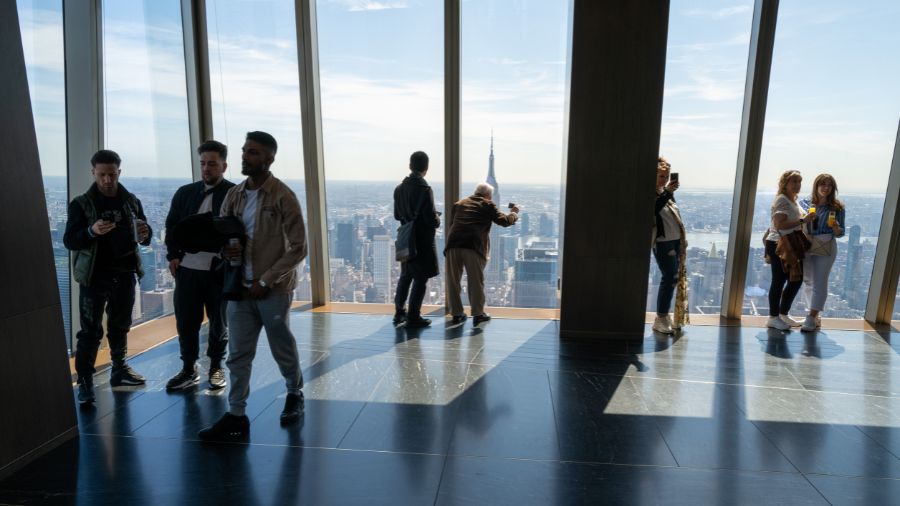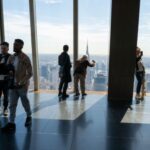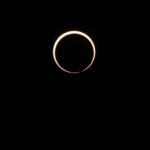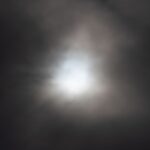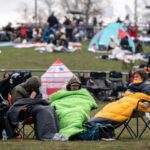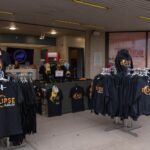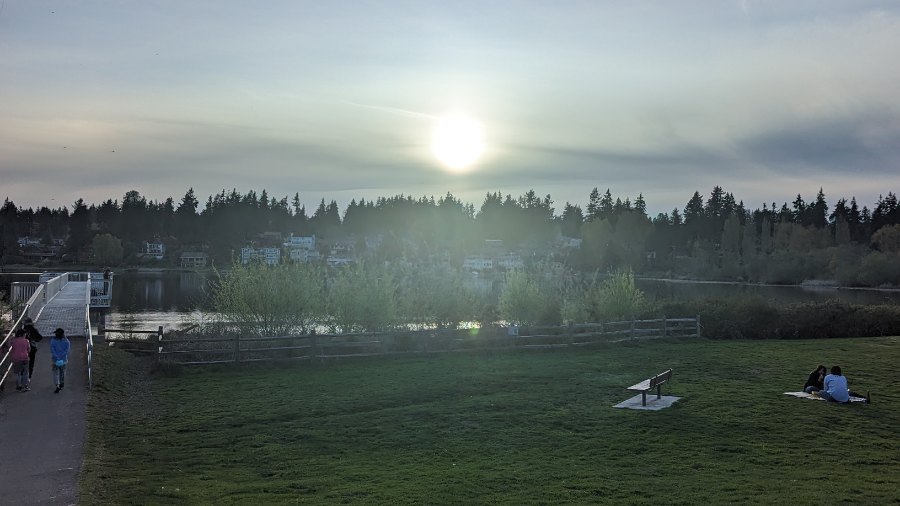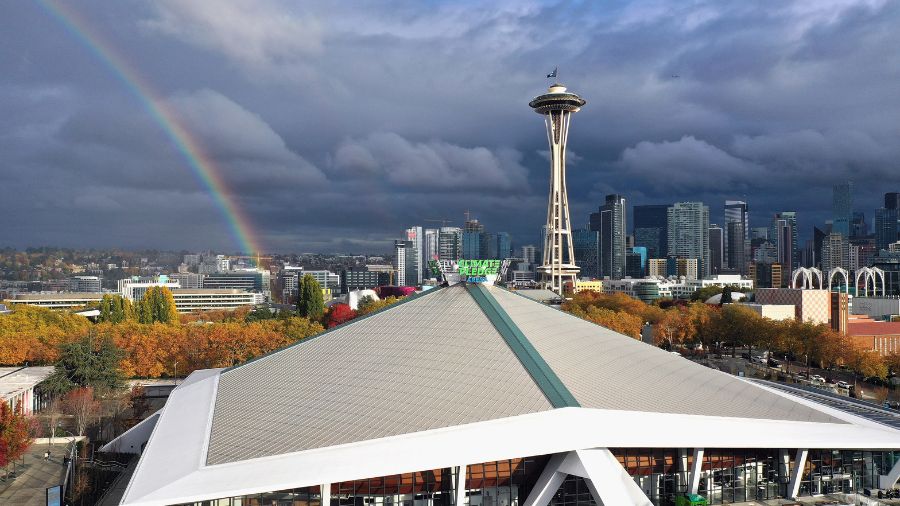Total solar eclipse wows North America. Clouds part just in time for most
Apr 8, 2024, 10:01 AM | Updated: Apr 9, 2024, 6:42 am
MESQUITE, Texas (AP) — A chilly, midday darkness fell across North America on Monday as a total solar eclipse raced across the continent, thrilling those lucky enough to behold the spectacle through clear skies.
Street lights blinked on and the planets came into view, as the moon shrouded the sun for a few minutes across the land. Dogs howled, frogs croaked and some people wept, all part of the eclipse mania gripping Mexico, the U.S. and Canada.
Almost everyone in North America could see at least a partial eclipse, weather permitting.
It was the continent’s biggest eclipse audience ever, with a couple hundred million people living in or near the shadow’s path, plus scores of out-of-towners flocking in to see it. With the next coast-to-coast eclipse 21 years out, the pressure was on to catch this one.
Clouds blanketed most of Texas as the total solar eclipse began its diagonal dash across land, starting along Mexico’s mostly clear Pacific coast and aiming for Texas and 14 other U.S. states, before exiting into the North Atlantic near Newfoundland.
In Georgetown, Texas, the skies cleared just in time to give spectators a clear view. In other spots, the eclipse played peek-a-boo with the clouds.
“We are really lucky,” said Georgetown resident Susan Robertson. “Even with the clouds it is kind of nice, because when it clears up, it is like, Wow!”
“I will never unsee this,” said Ahmed Husseim of Austin, who had the eclipse on his calendar for a year.
Just east of Dallas, the hundreds gathered at Mesquite’s downtown area cheered and whistled as the clouds parted in the final minutes before totality. As the sun finally became cloaked, the crowd grew louder, whipping off their eclipse glasses to soak in the unforgettable view of the sun’s corona, or spiky outer atmosphere, and Venus shining brilliantly off to the right.
Going into Monday’s spectacle, northern New England into Canada had the best chances of clear skies, drawing in spectators. The ideal conditions resulted in massive, hourslong traffic jams as visitors headed home.
Holly Randall, who watched from Colebrook, New Hampshire, said experiencing the eclipse was beyond her expectations.
“I didn’t expect to cry when I saw it,” she said, as tears ran down her face.
The show got underway in the Pacific before noon EDT. As the darkness of totality reached the Mexican resort city of Mazatlán, the faces of spectators were illuminated only by the screens of their cellphones.
The cliff-hanging uncertainty of the weather added to the drama. But the morning’s overcast skies in Mesquite didn’t rattle Erin Froneberger, who was in town for business and brought along her eclipse glasses.
“We are always just rushing, rushing, rushing,” she said. “But this is an event that we can just take a moment, a few seconds that it’s going to happen and embrace it.”
A festival outside Austin wrapped up early on Monday because of the threat of afternoon storms. Festival organizers urged everyone to pack up and leave.
Eclipse spectators at Niagara Falls State Park had to settle for darkness, but no stunning corona views. As people made their way out of the park a little more than an hour later, the sun broke through.
“I’d give it a 6 out of 10,” said Haleigh Thibodeau, who traveled from Buxton, Maine, with her mother.
In Rushville, Indiana, the street lights lit up as darkness fell, drawing cheers and applause from residents gathered on porches and sidewalks.
For some, eclipse day was also their wedding day. Couples exchanged vows in a mass ceremony at a park in Trenton, Ohio.
St. Louis was just outside totality, but that didn’t stop residents from taking in the scene from the Mississippi River aboard the Tom Sawyer, a paddlewheel riverboat.
“I almost enjoyed it a little bit more because it didn’t go black,” said passenger Jeff Smith of St. Louis.
During Monday’s full eclipse, the moon slipped right in front of the sun, entirely blocking it. The resulting twilight, with only the sun’s outer atmosphere or corona visible, was long enough for birds and other animals to fall silent, and for planets and stars to pop out.
At the Fort Worth Zoo, Adam Hartstone-Rose, a researcher from North Carolina State University, said most animals remained relatively calm. One gorilla climbed atop a pole and stood there for several seconds, likely a sign of vigilance.
“Nobody was doing sort of bonkers behavior,” he said.
The out-of-sync darkness lasted up to 4 minutes, 28 seconds. That’s almost twice as long as it was during the U.S. coast-to-coast eclipse seven years ago because the moon was closer to Earth.
It took just 1 hour, 40 minutes for the moon’s shadow to race more than 4,000 miles (6,500 kilometers) across the continent.
The path of totality — approximately 115 miles (185 kilometers) wide — encompassed several major cities this time, including Dallas; Indianapolis; Cleveland; Buffalo, New York; and Montreal. An estimated 44 million people live within the track, with a couple hundred million more within 200 miles (320 kilometers).
“This may be the most viewed astronomical event in history,” said National Air and Space Museum curator Teasel Muir-Harmony, standing outside the museum in Washington, awaiting a partial eclipse.
Experts from NASA and scores of universities were posted along the route, launching research rockets and weather balloons, and conducting experiments.
Monday’s celestial sensation held special meaning for Fallon Vahani, who followed the action from the Indianapolis Motor Speedway. Blind from birth, the 44-year-old Indianapolis resident moved her fingertips over a Braille table reader, feeling the small plastic bumps pulsing as they traced the moon’s path. She’d listened to a radio broadcast of the 2017 eclipse and was eager to try this new method.
“I was very excited when I could finally understand what everyone else was talking about,” she said.
___
AP journalists along the eclipse path contributed to this report.
___
The Associated Press Health and Science Department receives support from the Howard Hughes Medical Institute’s Science and Educational Media Group. The AP is solely responsible for all content.

